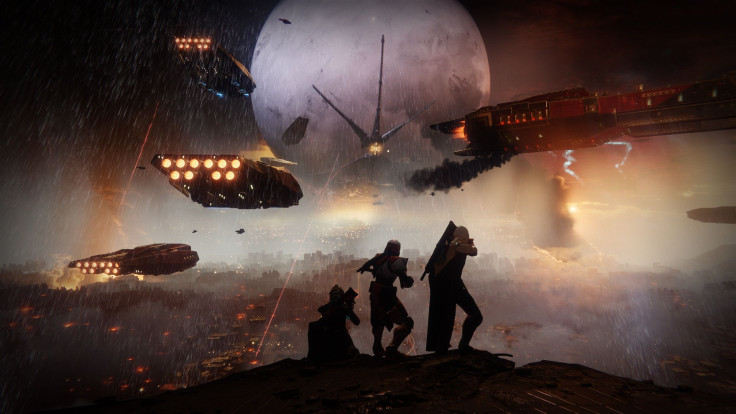Much has been said about the come-from-behind story in Destiny 2 , particularly the need for players to abandon all of the progress they’d made in Bungie’s first shared-world shooter. We haven’t heard much about why the studio was the latest to make resistance a focal point in its next project. But the explanation isn’t nearly as complicated as one might expect.
Player.One spoke with Activision CEO Eric Hirshberg the day before Destiny 2 hit PS4 and Xbox One. We couldn’t get answers to all the biggest questions surrounding Bungie’s latest shared-world shooter, like the size of of upcoming Destiny 2 expansions. But he did offer insight on the game’s narrative and Bungie’s decision to put the Destiny community on its heels again.
Resistance has been a popular theme in pop culture recently, particularly in the wake of the 2016 election. It’s also a topic we’ve seen explored in a variety of recent (and prominent) game sequels, including Wolfenstein 2, XCOM 2, Dishonored 2 and, now, Destiny 2. But the head of Activision says Bungie’s tale of resistance was more a result of functional need than a burning desire to explore the subject.
“Popular culture is often a reflection of broader cultural fears or issues. Is the idea of resistance in the zeitgeist right now? Maybe,” Hirschberg acknowledged. “In our case, we needed a narrative reason why everyone was going back to zero together. It had a utility as well. And I think it was an elegant solution because with this kind of persistent-world game, you grow very attached to your character and your accomplishments. And that’s exactly how we want it and how we designed it.
“But then this other problem arises, which is it becomes more and more daunting for a new player to join. And that’s all anybody wants, is for their friends to join in with the hobby and the passion that they’re into. So I think it's really positive to have everybody start together again but we needed that to make sense from a narrative standpoint. We couldn’t just press a button.”
The explanation makes sense. While the timing has certainly been convenient for the industry, ground was broken on all of the aforementioned resistance games years before #Resist started showing up on bumper stickers and t-shirts . Asking players to battle a stronger enemy let Bungie craft a story with an easy entry point for new players, without asking the Destiny community to abandon everything it had learned over the last three years. But it wasn’t the only major consideration when Bungie and its developmental partners went back to the drawing board for Destiny 2.
Twitch’s explosive growth in recent years has quickly made the platform relevant for more than just community building and word-of-mouth promotion. It’s now common for developers to think about how the Twitch audience might receive a new feature when brainstorming content for their games. But Hirshberg says the Destiny 2 team is more concerned with how their game plays than how it looks on stream.
“It starts and ends with the interactive experience,” Hirshberg said. “If it’s fun to play and it’s challenging you’ll have a natural audience. People want to watch the best people in the world do the things that they’re interested in. I think that’s the root of our interest in traditional sports and I think that’s the root of our interest in watching awesome players play the games they love.”
Destiny 2 is currently available for PlayStation 4 and Xbox One. The game hits PC on Oct. 24
Be sure to check back with Player.One and follow Scott on Twitter for more Destiny 2 news in 2017 and however long Bungie supports Destiny 2 in the years ahead.



















